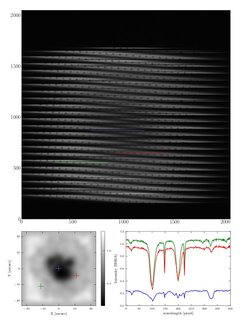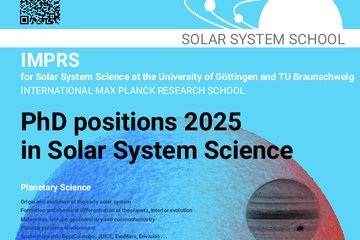
Microlens-fed Spectrograph
To study the dynamics of the continuously evolving solar atmosphere, it is necessary to obtain morphological information by imaging the solar surface on a time scale that is sufficiently small to effectively "freeze" the solar scene. While this can be successfully accomplished, only a small fraction of the information required for understanding the solar atmosphere is encoded in the image properties alone.
By analyzing in detail the strength and shape of the many spectral lines that are present in the solar spectrum, detailed information about the atmospheric stratification of temperature, vertical bulk motion, magnetic field strength and direction, encoded by atomic line transitions of the many elements that constitute the solar atmosphere, can be obtained. However, for a detailed analysis of the spectral properties of the Sun, a spectrograph with a high spectral resolution must be used, which cannot provide image information on the required small time scales over a two-dimensional field of view.
Since the basic techniques for obtaining spectroscopic and imaging data are not compatible with each other, there is currently no solar instrument in operation that can simultaneously record spectral and image information without compromising one or the other. Although a few instruments exist that are able to accomplish this task by rapidly scanning either spectrally or spatially, even by simultaneously imaging multiple narrow-band images, none of them is able to simultaneously produce high spectral and spatial resolution on the required time scales.

The Microlens-fed Spectrograph under development at MPS overcomes this problem by recording the spectral information for each image pixel within the pixel. In order to accomplish this, the pixel must first be reduced in size to create enough space for the spectral information to be dispersed without overlap with the neighboring pixels. The microlens spectrograph uses an assembly of microlens arrays to reduce the pixel size and create space for the spectral information, while minimizing the loss of light. Then the light is dispersed in a spectrograph, forming an array of spectra on the detector.

A test observation was made in the summer of 2012, where the microlens array was replaced with a pinhole array, producing the required pixel size reduction, but at the expense of a large amount of light. Figure 2 shows the observation of a sunspot with a 22x22 array of pinholes, confirming that this instrument is indeed able to provide spectra across a 2-D field of view.













